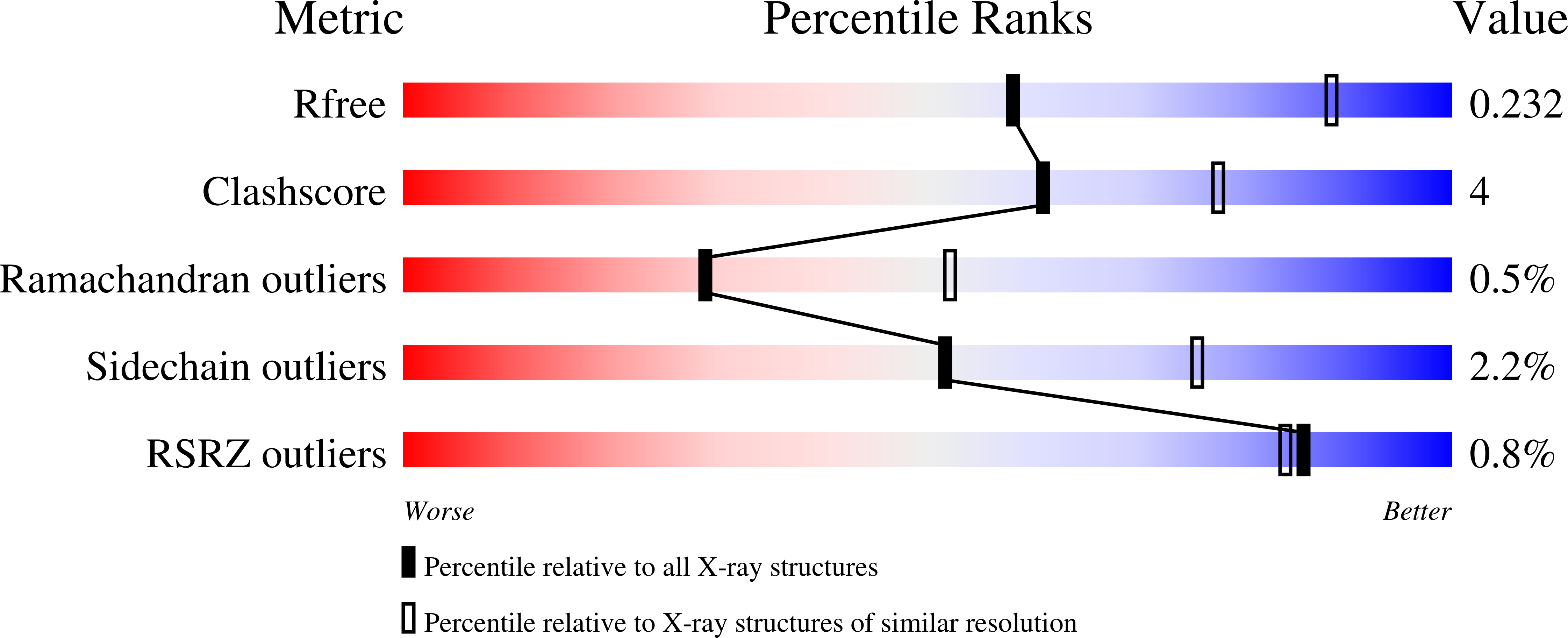Identification of histone deacetylase 10 (HDAC10) inhibitors that modulate autophagy in transformed cells.
Zeyen, P., Zeyn, Y., Herp, D., Mahmoudi, F., Yesiloglu, T.Z., Erdmann, F., Schmidt, M., Robaa, D., Romier, C., Ridinger, J., Herbst-Gervasoni, C.J., Christianson, D.W., Oehme, I., Jung, M., Kramer, O.H., Sippl, W.(2022) Eur J Med Chem 234: 114272-114272
- PubMed: 35306288
- DOI: https://doi.org/10.1016/j.ejmech.2022.114272
- Primary Citation of Related Structures:
7U3M, 7U69, 7U6A, 7U6B - PubMed Abstract:
Histone deacetylases (HDACs) are a family of 18 epigenetic modifiers that fall into 4 classes. Histone deacetylase inhibitors (HDACi) are valid tools to assess HDAC functions. HDAC6 and HDAC10 belong to the class IIb subgroup of the HDAC family. The targets and biological functions of HDAC10 are ill-defined. This lack of knowledge is due to a lack of specific and potent HDAC10 inhibitors with cellular activity. Here, we have synthesized and characterized piperidine-4-acrylhydroxamates as potent and highly selective inhibitors of HDAC10. This was achieved by targeting the acidic gatekeeper residue Glu274 of HDAC10 with a basic piperidine moiety that mimics the interaction of the polyamine substrate of HDAC10. We have confirmed the binding modes of selected inhibitors using X-ray crystallography. Promising candidates were selected based on their specificity by in vitro profiling using recombinant HDACs. The most promising HDAC10 inhibitors 10c and 13b were tested for specificity in acute myeloid leukemia (AML) cells with the FLT3-ITD oncogene. By immunoblot experiments we assessed the hyperacetylation of histones and tubulin-α, which are class I and HDAC6 substrates, respectively. As validated test for HDAC10 inhibition we used flow cytometry assessing autolysosome formation in neuroblastoma and AML cells. We demonstrate that 10c and 13b inhibit HDAC10 with high specificity over HDAC6 and with no significant impact on class I HDACs. The accumulation of autolysosomes is not a consequence of apoptosis and 10c and 13b are not toxic for normal human kidney cells. These data show that 10c and 13b are nanomolar inhibitors of HDAC10 with high specificity. Thus, our new HDAC10 inhibitors are tools to identify the downstream targets and functions of HDAC10 in cells.
Organizational Affiliation:
Institute of Pharmacy, Martin-Luther University of Halle-Wittenberg, Wolfgang-Langenbeck-Str. 2-4, 06120, Halle/Saale, Germany.


















